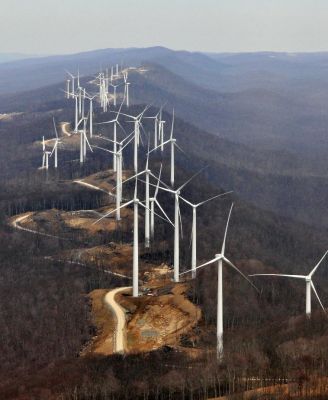Measuring the Performance of Wind Energy Projects
Virginia Wind
Assuring the Success of the Commonwealth Energy Policy
The General Assembly has found that energy is essential to the health, safety, welfare and economy of the Commonwealth and that state government should facilitate the availability and delivery of reliable and adequate supplies of energy to industrial, commercial, and residential users at reasonable costs. The General Assembly has also enumerated energy objectives (§ 67-101), set forth a Commonwealth Energy Policy (§ 67-102), and directed development of a non-regulatory Virginia Energy Plan (§ 67-201). Among the objectives addressed by the Code is promotion of alternative energy sources, which, compared to traditional energy resources, may be less polluting of the Commonwealth’s air and waters. Alternative energy includes electricity generated through the use of wind turbines.
Although the Commonwealth has no experience with commercial-scale wind energy projects, the General Assembly has sought to promote the development of such projects through expedited environmental permitting by establishment of a Permit By Rule administered by the Department of Environmental Quality (§ 10.1-1197.6). In addition, the General Assembly has directed the State Corporation Commission to approve increased consumer electricity rates for utilities that demonstrate attainment of the Commonwealth’s
Renewable Portfolio Standard (§ 56-585.2). Fortunately, the General Assembly has also recognized the need to establish a procedure for measuring the implementation of the Commonwealth Energy Policy (§ 67-100). It makes sense to assure that the desired benefits of energy production are obtained, that harm to the public interests are minimized, and that future revisions of the Virginia Energy Plan are informed by experience and data.

The General Assembly may have been well-intentioned in promoting wind energy development in the mix of alternatives, but new information about the efficacy of commercial-scale wind energy generation indicates that objective prediction and verification of performance is warranted.
Determination of both the projected and realized performance of wind energy generation projects is absolutely necessary in the proper administration of state incentives and licensing.
Wind energy generation projects must be subject to SCC licensing and the requirement to obtain a certificate of convenience and necessity.
SCC approval of wind energy generation facilities should further be conditioned upon provision of:
These analyses and reports should be based on publically reviewable data and methods that quantify effects on the reliability of electricity service and costs to consumers, electricity generation on an annual and monthly basis and during peak demand periods, and reductions in air pollution obtained through displacement of electricity generation by traditional energy sources. Prior to issuance of any licensing action under Title 56, the SCC must verify that the data and calculations concerning these costs and benefits are credible and accurate and that proposed projects are necessary and in the public interest.
Finally, it is imperative that future periodic revisions of the Virginia Energy Plan incorporate knowledge and experience gained from existing wind energy projects and that plan revisions be subject to public review and comment.
—Virginia Wind [1]
URL to article: https://www.wind-watch.org/documents/measuring-the-performance-of-wind-energy-projects/
URLs in this post:
[1] Virginia Wind: http://www.vawind.org/